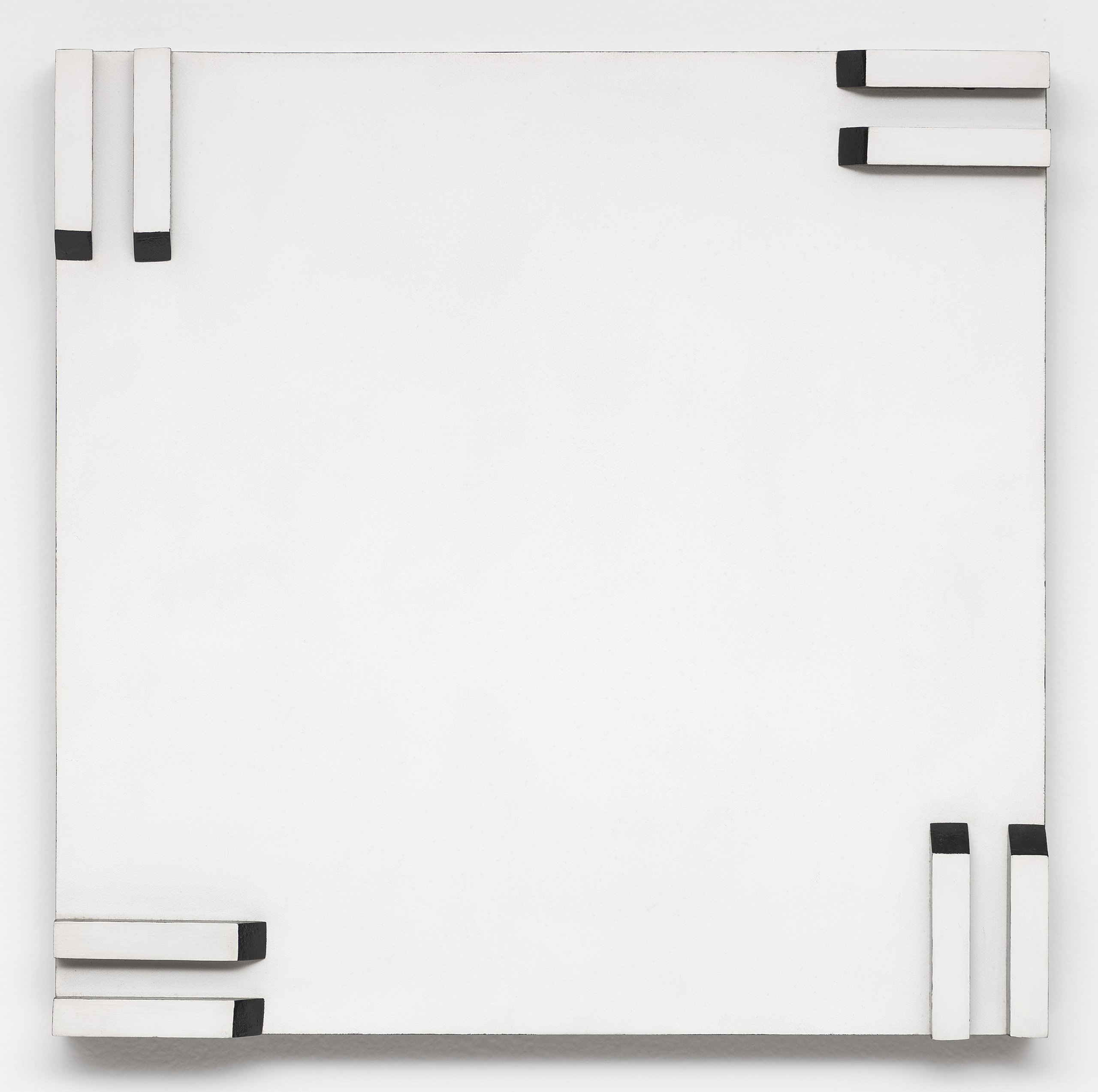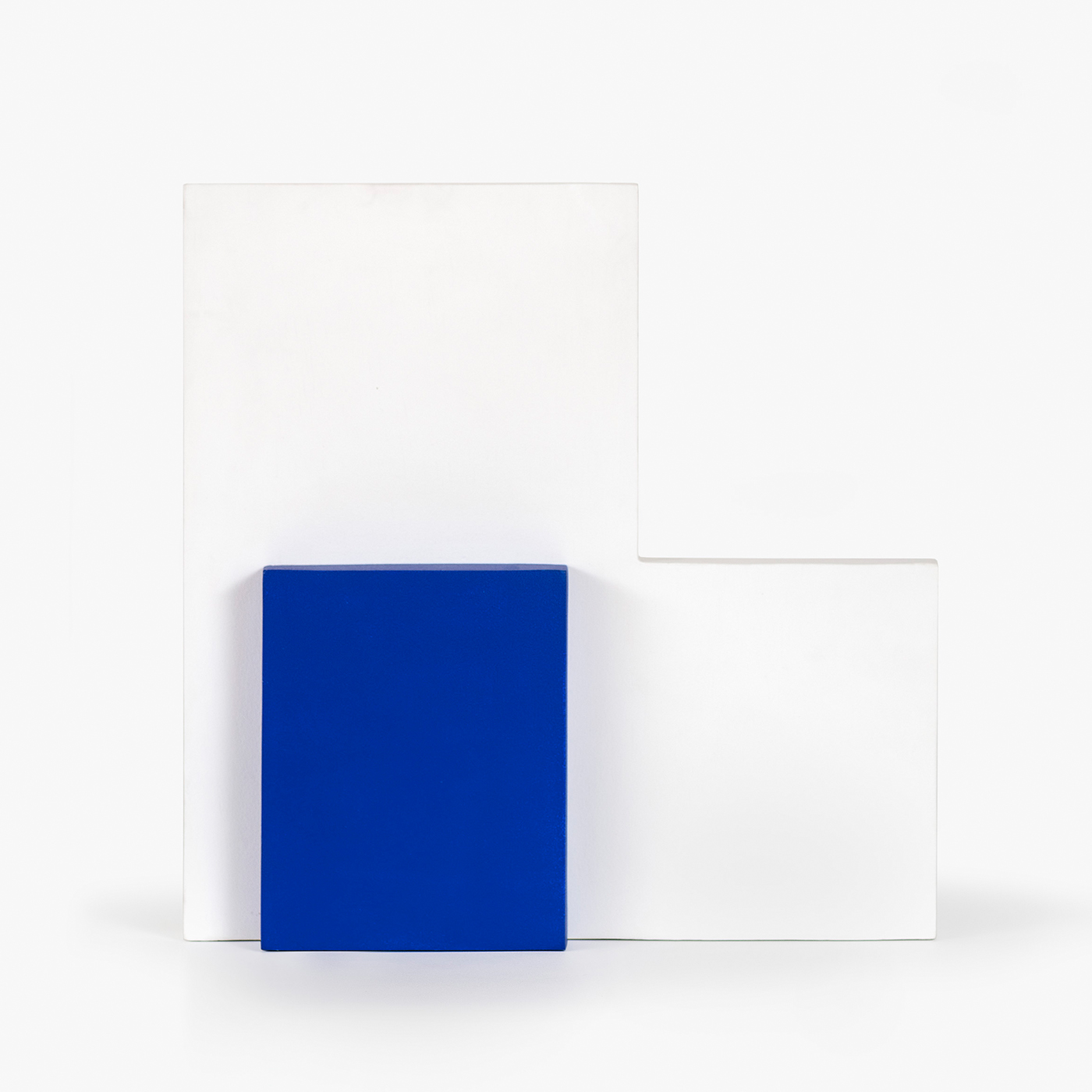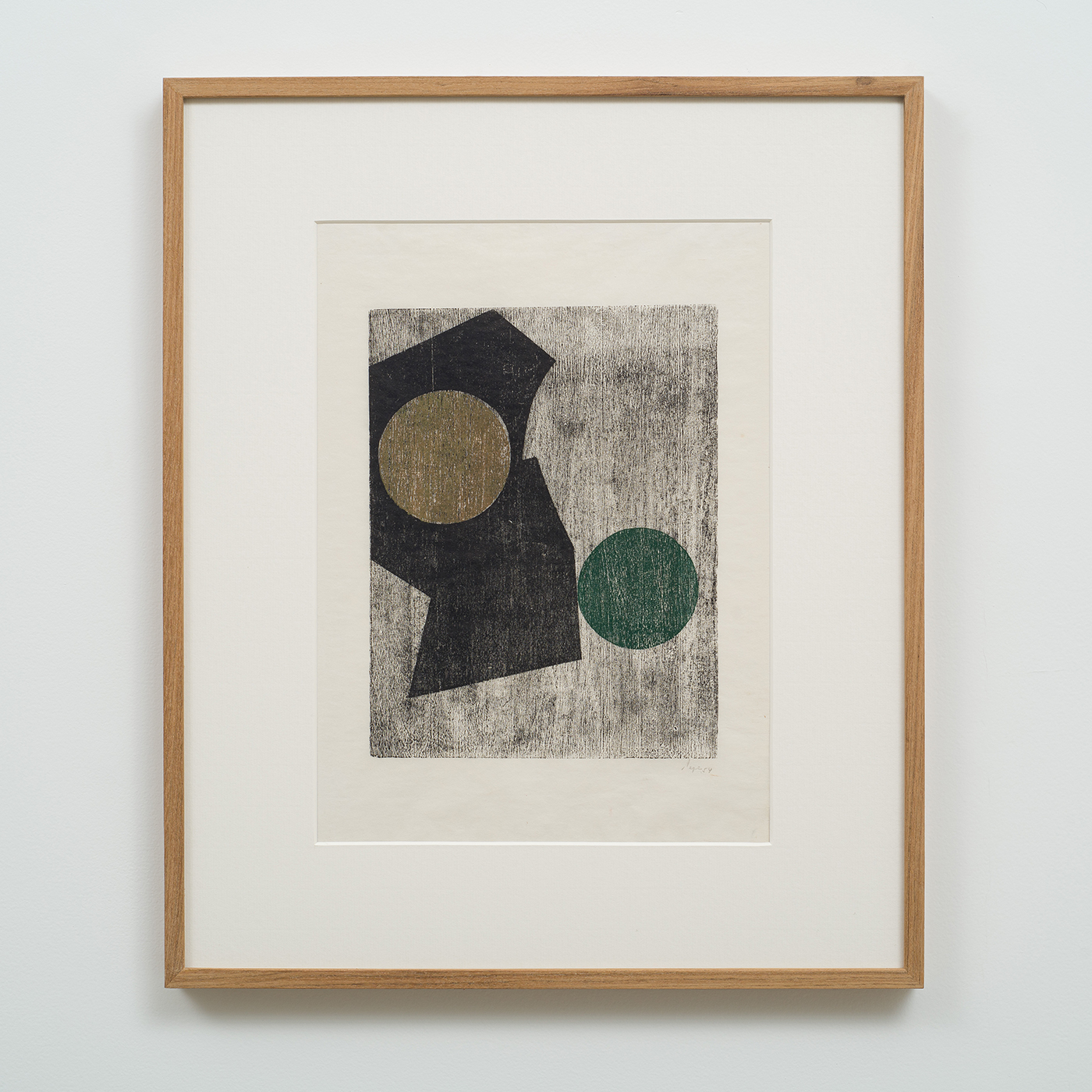Lygia Pape
One of the most important artists of modern and contemporary art in Brazil, Lygia Pape created works in various media, including painting, sculpture, printmaking, film, and performance. Pape was known for her use of geometric shapes and vibrant colors, as well as her exploration of the relationships between space, time, and the human body.
Pape joined the Grupo Frente in the early 1950s, alongside artists such as Hélio Oiticica, Lygia Clark, Franz Weissmann, and Ivan Serpa, playing a key role in the development of concretism. Her works from this period stand out for the transgressive way in which the artist approached abstraction and for her questioning of the excessively rationalist tendency of concretism, which focused on industrial materials and techniques. The famous series of prints Tecelares, produced between 1955 and 1959, demonstrates her connection with craftsmanship, which opposed the rigid geometry of the era's concrete art. In these works, the geometric line simultaneously dominates and integrates the lines of the wooden knot. Tecelares, produzida entre 1955 e 1959, demonstra sua aproximação com o artesanato, que se opunha à geometria rígida da arte concretista da época. Nestas obras, a linha geométrica ao mesmo tempo domina e integra as linhas do nó de madeira.
A pioneer in the creation of artist books, Pape developed several series based on the book format, exploring the possibilities of creating narratives that could be physically manipulated or mentally reimagined by the viewers. These works began with her experiments with image and word, later evolving into purely abstract compositions that the artist conceived as fragments of a story. One of these projects, titled Livro do Tempo (Book of Time), consists of 365 objects made from square pieces of wood that Pape cut, reassembled, and painted with bright colors. Livro do Tempo, consiste em 365 objetos feitos de peças quadradas de madeira que Pape cortou, remontou e pintou com cores brilhantes.
From the 1960s onward, Pape deepened her research and experiments on the active role of the public in creating the artwork, also focusing on the sensory aspect of the artistic experience. She left Grupo Frente and joined the Neoconcreto movement. She created several video art projects, collaborated with Cinema Novo, and worked in graphic design, designing visual programming and creating posters for films. The participatory aspect of her production took center stage in works like Divisor (1968), a large fabric piece with openings through which participants placed their heads, forming a large collective body united by the artwork. Divisor (1968), uma enorme peça de tecido com aberturas através das quais os participantes colocavam suas cabeças, formando um grande corpo coletivo unido pela obra.
In addition to being a visual artist, Pape worked as a teacher, lecturing at the Museum of Modern Art in Rio de Janeiro, the School of Visual Arts at Parque Lage, and other educational institutions. Her extensive exhibition history includes solo exhibitions since 1959. Among her recent solo exhibitions are the one dedicated to the Tecelares series at the Art Institute of Chicago (2023); Lygia Pape: A Multitude of Forms at the Metropolitan Museum of Art, New York (2017); and Lygia Pape: Space Magnetized, presented at the Pinacoteca of São Paulo and Serpentine Gallery (2012), as well as the Museo Nacional Centro de Arte Reina Sofia (2011). Among the group exhibitions, her participation in six editions of the São Paulo Biennial stands out, along with historic shows such as Nova Objetividade Brasileira (1967) and Projeto Construtivo Brasileiro na Arte: 1950-1962 (1977). Her works are part of major national and international collections, including the Hammer Museum in Los Angeles, Tate Modern in London, MoMA in New York, the Inhotim Institute, and the Pinacoteca do Estado de São Paulo, among others. Lygia Pape: a Multitude of Forms, no Metropolitan Museum of Art, Nova York (2017); e Lygia Pape: espaço imantado, apresentada na Pinacoteca de São Paulo e Serpentine Gallery (2012) e Museo Nacional Centro de Arte Reina Sofia (2011). Entre as coletivas, destacam-se seis edições da Bienal Internacional de São Paulo, além de mostras históricas como Nova Objetividade Brasileira (1967) e Projeto Construtivo Brasileiro na Arte: 1950-1962 (1977). Suas obras integram grandes acervos nacionais e internacionais como Hammer Museum Los Angeles; Tate Modern, Londres; MoMA, Nova York; Instituto Inhotim; Pinacoteca do Estado de São Paulo, entre outros.

WORKS

Untitled, from the Reliefs series, 1954/1956
tempera on wood
40 x 40 x 5 cm [15 3/4 x 15 3/4 x 2 in]
(0187)

Untitled, from the Tecelares series, n.d.
woodcut on Japanese paper
30,5 x 22,7 cm [12 x 9 in]
5/20
(0293)

Untitled, from the Tecelares series, 1953
woodcut on Japanese paper
45 x 28,5 cm [17 3/4 x 11 1/4 in]
(0330)

Untitled, from the Book of Time series, 1965
automotive paint and tempera on wood
50 x 50 x 8,3 cm [19 3/4 x 19 3/4 x 3 1/4 in]
(0353)

Volantes 3 and 4, 1999
copper plated iron and synthetic hair
117 x 25 x 50 cm [46 x 9 7/8 x 19 3/4 in] (1/2) 92,5 x 11,8 x 51,5 cm [36 3/8 x 4 5/8 x 20 1/4 in] (2/2)
(0382)




